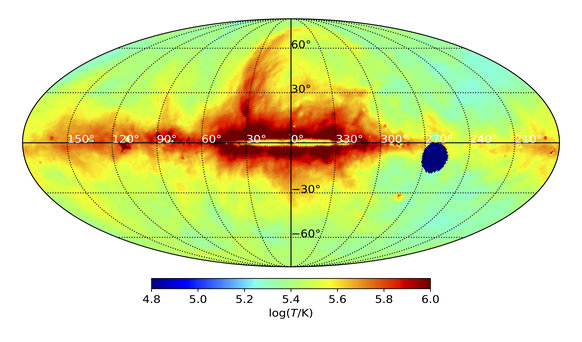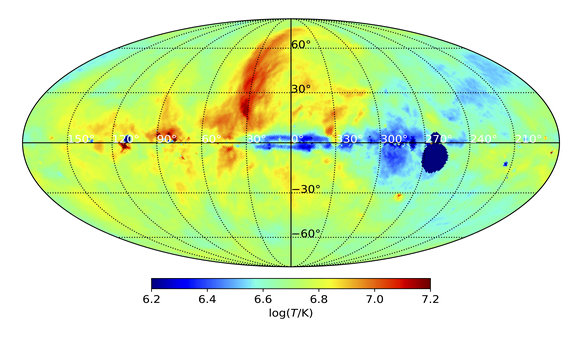Chinese Astronomers Made the First Ultra-long Wavelength Sky Model
The radio sky below ~30 MHz (ultra-long wavelength or ultra-low frequency), particularly below ~10 MHz, are seldom observed. Because of the absorption and distortion by the ionosphere, it is quite difficult to receive such radio signal by telescopes on Earth. Moreover, to archive high resolution at such long wavelength, it requires antennas of huge size, or an interferometer array. Ultra-long wavelength is the last un-explored electromagnetic window.
Observing the ultra-long wavelength sky on the Earth is only possible at a few particular locations where the ionosphere effects are weak. In the~1950s, there are some ground-based observations performed at Tasmania, Australia. They obtained the maps for part of the sky at several MHz, but the celestial structures are hard to recognize.
The space, particular the far-side of our Moon, is an ideal location for ultra-long wavelength observations. Not only because it can get rid of the ionosphere effects, but also the Moon can mask the RFI from the Earth. In the 1970s, NASA’s lunar-orbit satellite RAE-2 proved that indeed the radio environment at the far-side of the Moon is very clean and obtained sky maps between ~1-10 MHz (Novaco & Brown 1978). These maps cover most of the sky but still have a poor resolution.
To open this un-explored electromagnetic window, some future space projects have been proposed, for example the lunar-orbit interferometer array DSL proposed by China (Chen et al. 2019) and the lunar-surface based array FARSIDE (Burns et al. 2019).They will map the ultra-long wavelength sky with unprecedented resolution, and help to study the astrophysics behind, such as the distribution and status of the ISM, the origins of cosmic ray, the planet radio activities, the Solar radio burst, and so on.
To prepare for these upcoming projects, scientists at NAOC recently developed a radio sky model that applies to this ultra-long wavelength band for the first time. Particularly, they involved in a sky model the free-free absorption by diffuse Galactic ISM electrons. They predicted the morphology of the radio sky below 10 MHz, which is very different from higher frequencies. For example the high Galactic latitude regions are brighter while the Galactic plane is dark. Moreover, one can see clearly the shadows of Galactic spiral arms and the radio signal leaks from the gaps between arms. The model also provides interpretation for the observed global radio spectrum downturn at ~3-5 MHz.
The research paper has been published on The Astrophysical Journal at https://iopscience.iop.org/article/10.3847/1538-4357/abf55c, and the model (including the data and maps) is publicly released at https://github.com/Yanping-Cong/ULSA. The model has been used for designing instruments, developing imaging algorithm and optimizing survey strategy in the DSL project (“Hongmeng” project).



Figure: The predicted sky maps, from top to bottom, at 10, 3 and 1 MHz. (Credit: Cong et al. 2021)